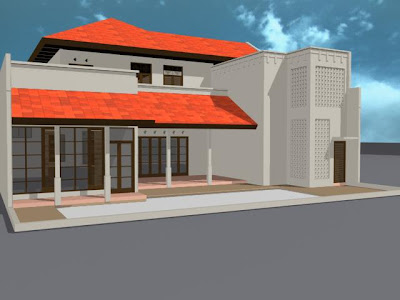We want the house to be redesigned in a classical style that reflects the history Indonesian. We do not want the house to be in typical Javanese or Balinese design as this has been very common.
So we further decided that a Java Colonial style can meet our desire. Hence the research was commenced to find any related archives that can give us further ideas. It was not an easy job to get the archives. We looked in the internet, hotel website and books, visited Jakarta's old town and Menteng area and had an indepth discussion with the expert, in order to allow us getting the grip on the desired design.
The house should be elegant, grand, and has the Indonesia feels.
In my own interpretation, Java Colonial design is the common building design used during the era of East Indies in Indonesia. It should be circa 1800 til early 1900. The influence of European design is very strong so that buildings used column and steel construction and the 'grand' effect is very obvious. No wonder that palaces in Indonesia (presidential or Kraton) are recognized to apply this design.
*From time to time I might revise this interpretation if I gain further understanding
source: google search

















































